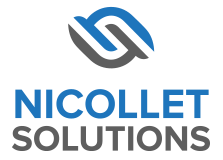Earlier this month the Wall Street Journal published an article titled “Amazon and Walmart Tell Customer to Skip Returns of Unwanted Items”, which created a buzz around this approach. While at first blush, it seems like an easy decision: if the cost of returning is higher than the credit that will be given to the customer refund the item and have the customer keep it. However, there are changes in the customer behavior, the cost of processing items, and the value of a returned item, that require retailers to monitor the situation carefully. Let’s take a look at the financials and potential changes impacting the best decision.
Earlier this month the Wall Street Journal published an article titled “Amazon and Walmart Tell Customer to Skip Returns of Unwanted Items”, which created a buzz around this approach. While at first blush, it seems like an easy decision: if the cost of returning is higher than the credit that will be given to the customer refund the item and have the customer keep it. However, there are changes in the customer behavior, the cost of processing items, and the value of a returned item, that require retailers to monitor the situation carefully. Let’s take a look at the financials and potential changes impacting the best decision.
Costs with Return versus Refund; The basic math to compare a return vs a refund is simple.
- Amount Customer paid for the item $15
- Retailers cost to purchase item $8
- Cost to transport and process return $5
- Number of items returned 1,000
| Base Case | |
|---|---|
| Recovered Value per Unit | $0 |
| Per Unit Cost Return * | $15+$8+$5-0 = $28 |
| Per Unit Cost Refund | $15+$8+$0+0 = $23 |
| Per Unit Savings | $5 |
| Number of units | 1,000 |
| Net Savings | $5,000 |
Consideration 1: While in the base case scenario the value of the returned item was $0. What if, by developing a secondary market to enable the reuse of these items, customers could purchase the $15 item for $4 creating a win for the 2nd markets customer, the business, and the environment. The savings with Consideration 1 is 80% less than the base case.
| Base Case | Consideration 1 | |
| Recovered Value per Unit | $0 | $4 |
| Per Unit Cost Return | $15+$8+$5-0 = $28 | $15+$8+$5-4 = $24 |
| Per Unit Cost Refund | $15+$8+$0+0 = $23 | $15+$8+$0+0 = $23 |
| Per Unit Savings | $5 | $1 |
| Number of units | 1,000 | 1,000 |
| Net Savings | $5,000 | $1,000 |
Consideration 2: Customer behavior changes resulting in more items returned.
- If customers begin to see the pattern for when items do not need to be returned, they may begin requesting returns for more items that fit the criteria. For example, today many customers do not bother returning low cost items. They feel the burden of returning is not worth the time, so they keep it and make the best of it. However, if they know there is a chance they will get credit and not have to return the item, they will be more likely to attempt a return, overall increasing the number or returns/refunds.
- Or, bad behaviors could be created. If a customer understands the practice, they could take advantage of the situation by purchasing with the intent to request a return, receive a credit, and keep the item for free.
Consideration 2 assumes the number of units returned increases from 1,000 to 1,100.
| Base Case | Consideration 2 | |
| Recovered Value per Unit | $0 | $0 |
| Per Unit Cost Return | $15+$8+$5-0 = $28 | $15+$8+$5-0 = $28 |
| Per Unit Cost Refund | $15+$8+$0+0 = $23 | $15+$8+$0+0 = $23 |
| Per Unit Savings | $5 | $5 for 1,000 -$23 for 100 |
| Number of units | 1,000 | 1,100 |
| Net Savings | $5,000 | $2,700 |
Combined Consideration 1 & 2: $4 Recovery and 100 incremental returns
| Base Case | Both Consideration 1 & 2 | |
| Recovered Value per Unit | $0 | $4 |
| Per Unit Cost Return | $15+$8+$5-0 = $28 | $15+$8+$5-0 = $24 |
| Per Unit Cost Refund | $15+$8+$0+0 = $23 | $15+$8+$0+0 = $23 |
| Per Unit Savings | $5 | $5 for 1,000 -$23 for 100 |
| Number of units | 1,000 | 1,100 |
| Net Savings | $5,000 | ($1,300) |
As this example illustrates, the decision is highly sensitive to the number of returns and the assumed value of a returned item. The financials changed from a $5,000 savings to a $1,300 loss.
Before making a decision to move to “refunding without return” as a policy, it is critical that these factors can be measured, and procedures are in place to monitor any changes in the assumed values. In addition, building an intelligent capability to make refund versus return decisions real time, enables the use of information about specific customer behavior, current recovery rates, and item specific operational costs, to make a much more sophisticated and profitable decision.
About Nicollet Solutions:
Returns management and reverse logistics optimization are critical for the customer experience and the profitability of your organization. Nicollet Solutions is here to help you make these decisions and to implement effective solutions.


